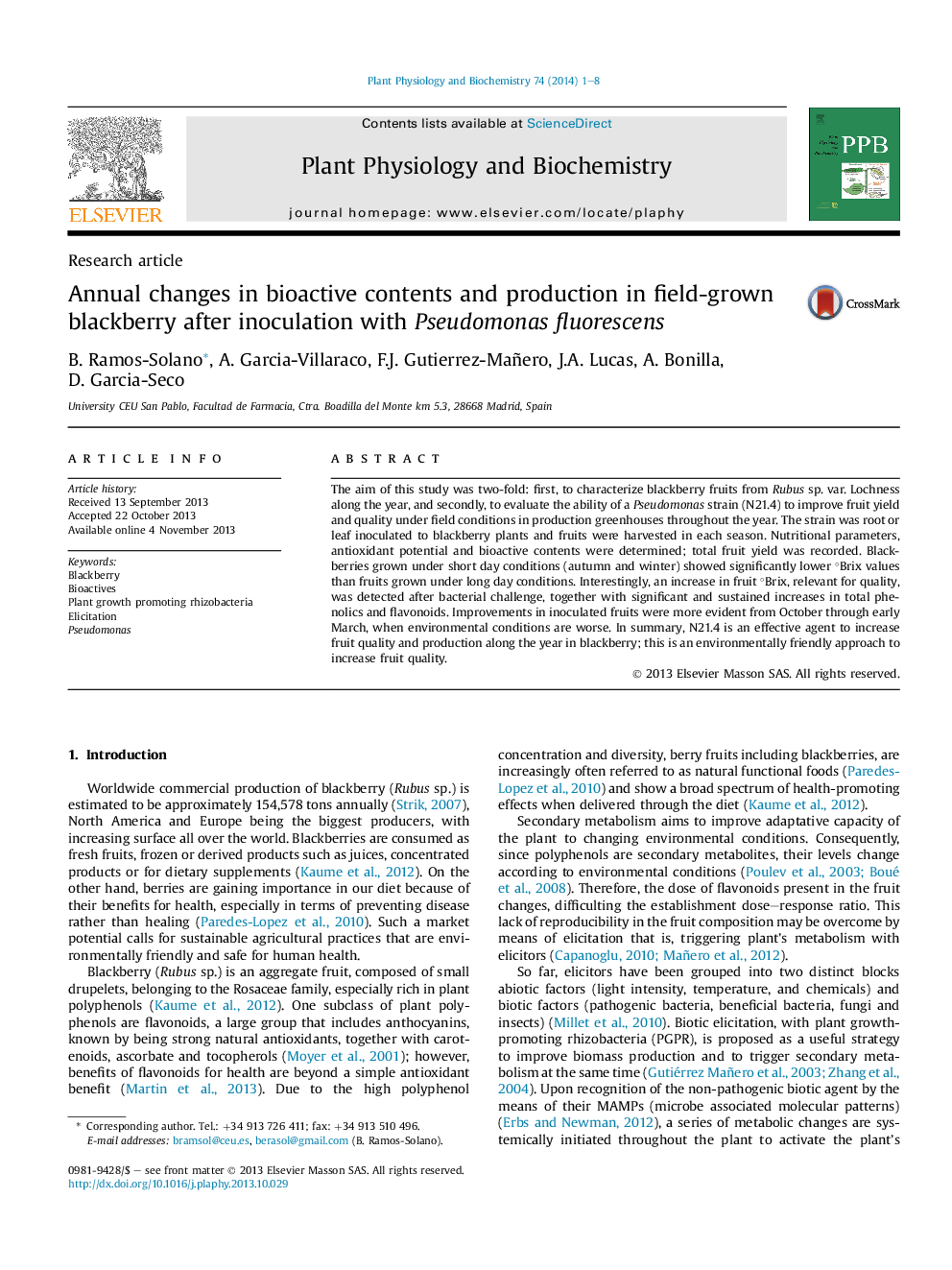| Article ID | Journal | Published Year | Pages | File Type |
|---|---|---|---|---|
| 2015932 | Plant Physiology and Biochemistry | 2014 | 8 Pages |
•Pseudomonas fluorescens N21.4 is an effective agent to increase Rubus sp. fruit quality and production.•Bacterial challenge increase in fruit ºBrix, together with total phenolics and flavonoids.•Improvement in inoculated fruits is more evident when environmental conditions are worse.
The aim of this study was two-fold: first, to characterize blackberry fruits from Rubus sp. var. Lochness along the year, and secondly, to evaluate the ability of a Pseudomonas strain (N21.4) to improve fruit yield and quality under field conditions in production greenhouses throughout the year. The strain was root or leaf inoculated to blackberry plants and fruits were harvested in each season. Nutritional parameters, antioxidant potential and bioactive contents were determined; total fruit yield was recorded. Blackberries grown under short day conditions (autumn and winter) showed significantly lower °Brix values than fruits grown under long day conditions. Interestingly, an increase in fruit °Brix, relevant for quality, was detected after bacterial challenge, together with significant and sustained increases in total phenolics and flavonoids. Improvements in inoculated fruits were more evident from October through early March, when environmental conditions are worse. In summary, N21.4 is an effective agent to increase fruit quality and production along the year in blackberry; this is an environmentally friendly approach to increase fruit quality.
Graphical abstractSummary of results obtained during whole production cycle.Figure optionsDownload full-size imageDownload as PowerPoint slide
